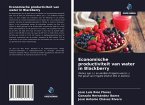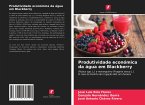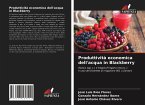The objectives of this work were to determine the blue water footprint (HH) for blackberry (Rubus spp. L.) and strawberry (Fragaria vesca L.) cultivation through indicators of efficiency and physical, economic and social productivity of water used in production, as well as capital productivity in DR-061 in Zamora, Michoacan, Mexico. In methodology, the mathematical models of Rios et al (2015a and 2018) were used to estimate the physical (HHF), economic (HHF) and social (HHS) water footprint of the crops. The results show that the HHs, always pointing first to the blackberry and then to the strawberry, were: in the HHF 694 and 122 L Kg-1, the HHF was USD 2.17 and USD 3.59 m-3 gain, the HHS was 111.46 and 77.42 hm-3 jobs. In capital productivity, the blackberry was more productive than the strawberry, since its RB/C indexes were 3.19 and 1.96, and the social productivity of capital was 112.2 and 20.7 jobs per million USD invested.








